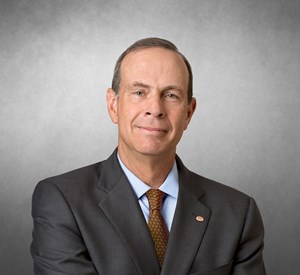Chevron CEO “surprised” by ExxonMobil arbitration, discusses Guyana, LNG export ban and more at CERAWeek 2024
(WO) – Day 2 of CERAWeek by S&P Global kicked off in Houston, Texas, with a discussion between Dan Yergin, Vice Chairman of S&P Global, and Mike Wirth, CEO of Chevron. The two touched on several oil and gas industry hot topics, including artificial intelligence, Biden’s LNG ban, Chevron’s dispute with ExxonMobil regarding its stake in the oil-rich Stabroek block offshore Guyana, and more.
Reaction to ExxonMobil’s CEO. On Monday, ExxonMobil CEO Darren Woods said at CERAWeek that his firm has “no interest” in acquiring Hess and is “open” to discussing Guyana with Chevron, moving forward. Yergin asked Wirth his response to Woods’ words, prompting laughter from the audience,.
Wirth maintained that Chevron engaged the Stabroek block’s stakeholders for months and was surprised at the arbitration announcement. Still, the CEO remains confident in the Hess merger. The deal is “important to Guyana, U.S. energy security, and the oil and gas industry as a whole,” Wirth said.
Thoughts on LNG ban. Much of the conversation at CERAWeek revolves around policy. So, it wasn’t surprising when Yergin asked Chevron’s CEO his thoughts on Biden’s controversial ban on liquified natural gas (LNG) exports.
Wirth’s thoughts echoed sentiments made by many over the past weeks; while studying the effects of LNG export is “understandable,” there is likely a better way to navigate the issue. In Wirth’s opinion, the LNG ban signals to the rest of the world that the U.S. is not a reliable supplier, discourages long-term investment, and will have unintended geopolitical consequences.
Upstream targets. Wirth and Yergin also touched on Chevron’s ambitious upstream targets, most notably in the U.S. Permian basin, offshore Guyana and Kazakhstan.
Wirth expects steady growth in the Permian, where the company expects to reach 1 MMbopd by 2025 from the region. While Chevron hit record production levels in 2023, he thinks activity will be flat at the beginning of 2024, as drilling efficiencies roll out. The company will continue to use new technology to unlock more oil and gas reserves in the Permian.
Wirth also mentioned major project developments in Kazakhstan, where Chevron has been operating since it became an independent country. External forces, such as geopolitical conflict and rising costs, have pushed production commencement back time and time again; however, Wirth appeared confident that first oil will be coming from the region’s new projects in 2024 or 2025.
Artificial intelligence is a hot topic across most industrial sectors, and the oil and gas industry is no exception. Wirth discussed Chevron’s “Digital Scholars” program, a partnership with MIT to train the company’s experienced geoscientists in upcoming technologies. Chevron’s “digital scholars” learn how to solve the industry’s biggest problems with digital solutions like safety, well operations, E&P performance and more.
The program allows the company to study artificial intelligence for subsurface applications, digital twins and automation, concepts that Chevron has been steadily putting into practice. Wirth said, “every part of our business will be transformed by the technologies,” underpinning Chevron’s commitment to the oil and gas industry’s transition to digital technologies.
The need for a “balanced” energy conversation. Wirth wrapped up the leadership dialogue calling for balance between affordability, reliability and sustainability. To have successful energy policy, governments can’t hyperfocus on one challenge. Affordability and reliability often take a back seat to “net-zero” ambitions, culminating in crises like the European energy shortage.
Chevron’s widely reported problems with California regulations have prompted divestitures in reliable energy, Wirth said. The state’s harsh regulatory environment makes it difficult to conduct business.
“We have to deal with the world as it is, not as it appears on a spreadsheet,” Wirth said. Finding the balance between sustainability and customer needs will be key to an efficient energy transition.



